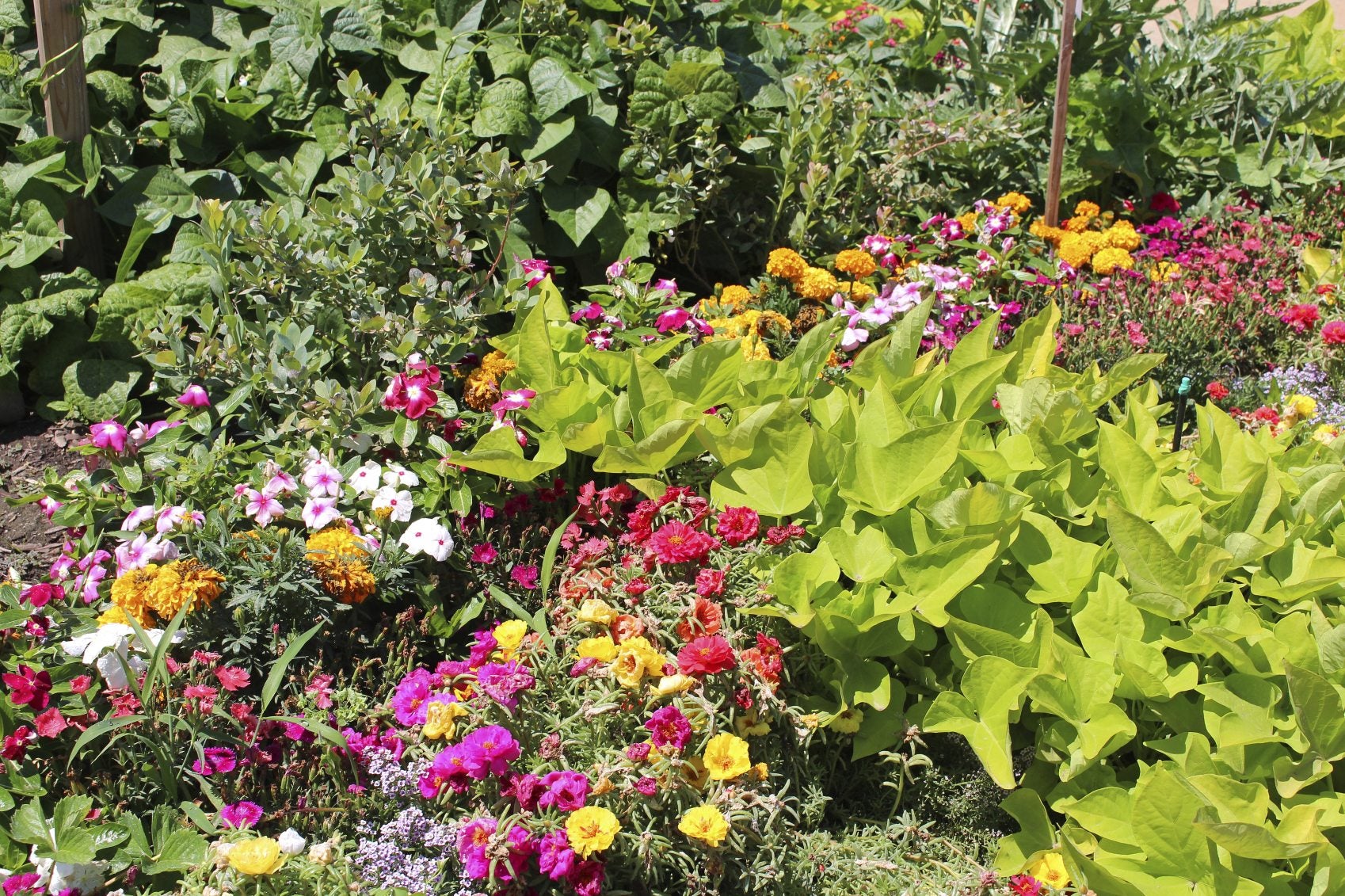
You want a vegetable garden, but the backyard is shaded by a stand of evergreen trees or is overrun by the kids’ toys and play area. What to do? Think outside the box, or fence as it were. Many of us rarely use our front yard. Many people only ever see the front yard for a few brief moments when they pull into the garage or grab the mail. It’s time to change all that by planning a front yard vegetable garden.
Considerations for Front Yard Vegetable Gardens
Creating an edible front yard does not have to be complex. You might want to just incorporate an herb garden or potted vegetables tucked in amongst existing landscaping. In my neighborhood, every house has a parking strip. You know the ones, generally covered with grass that is often ignored. Many of my neighbors have replaced the grass with raised vegetable beds. If you live in a neighborhood governed by a homeowner association, it would be wise to check the rules. Some homeowner associations dislike the idea of front yard vegetable gardens. You may be able to convince them that vegetables in the front lawn can also be beautiful. There are plenty of things to consider when planning a front yard vegetable garden. If the garden is going to replace the parking strip or another area of lawn, for instance, dig the turf up and don’t spray it with herbicide. Remove weeds and rake the soil free of rocks and clods. Then, run a soil test to determine what, if anything, the soil needs nutritionally. Incorporate about 2 to 4 inches (5-10 cm.) of organic compost into the soil.
Planting Vegetables in Front Lawns
First, when creating an edible front yard, draw up a plan that incorporates flowers and colorful veggies. There are many vegetables and herbs that have unusual colorations and textures. ‘Violetto’ artichokes, ‘Purple Ruffles’ basil, ‘Russian Red’ kale, Swiss chard, and pretty much any pepper variety will add interest to your garden. Think about the fact that some veggies will have reached maturity before others. In this case, what would you use to fill in the blank area? Definitely add flowers to vegetables in the front lawn garden. They are not only pretty but attract beneficial pollinators. Additionally, many flowers are also edible. Try planting in groups rather than in rows to add an aesthetic effect. Experiment a little with veggies you’ve never grown combined with the tried and true. Once your raised bed or planting area has been sown, keeping it looking good is important. For one thing, if you are out there maintaining the garden, it is less likely to become plagued with insects or disease. Garden maintenance is also a good social outlet. It gives you a chance to interact with your neighbors. On that note, you want to be a good neighbor, so keep the garden beautiful and free from unsightly plants, weeds, and garden tools. Garden tools? Yes, no one wants to look at the wheelbarrow or other equipment that you used a week ago but is still sitting in the front yard. Remove any dying or diseased plants. Again, no one wants to look at the squash plants that have succumbed to powdery mildew. To fill in those blank spots in the garden, bring in potted herbs, flowers, or veggies to add dimension and interest to the garden and keep it looking bountiful. Unless you live in a perennially temperate climate, realize that all good things come to an end and so does gardening. Once the veggies have finished bearing, clean them up – time for the compost bin. Make sure the entire front yard vegetable garden is cleaned up. If you live in a climate that is on the mild side, plant kale or other cool weather vegetables and accentuate with chrysanthemums for beautiful fall color.
Sign up for the Gardening Know How newsletter today and receive a free copy of our e-book "How to Grow Delicious Tomatoes".

Amy Grant has been gardening for 30 years and writing for 15. A professional chef and caterer, Amy's area of expertise is culinary gardening.
